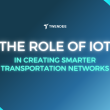In the ever-evolving digital landscape, Artificial Intelligence (AI) is becoming the cornerstone of modern user experience (UX). From delivering hyper-personalized content to enhancing website accessibility and streamlining customer service, AI is changing how users interact with websites. For companies in AI, blockchain, Web2, and Web3, integrating AI into UX is not just a trend but a necessity to remain competitive.
This article explores how AI transforms user experience, improves customer satisfaction, addresses challenges, and provides practical insights for businesses aiming to leverage AI in their UX design.
What Makes AI-Powered UX Different?
AI fundamentally shifts how websites serve their visitors. Unlike traditional websites that rely on static, one-size-fits-all approaches, AI enables dynamic personalization, predictive features, and intelligent automation. For instance:
- Personalized Content Recommendations: AI analyzes user data, such as browsing behavior and purchase history, to deliver tailored content or product recommendations. According to a report by Accenture, 91% of consumers prefer brands that offer relevant recommendations.
- Predictive User Journeys: AI anticipates user intent and predicts what users are looking for, enabling smarter search functionalities and faster navigation.
- Real-Time Adaptability: Websites powered by AI can adapt their content and structure in real-time, ensuring that users enjoy seamless experiences.
With AI, businesses can ensure that every user interaction feels intuitive, efficient, and valuable.
The Practical Benefits of AI in UX
AI delivers measurable and practical improvements to user experience. Companies that embrace AI-driven design benefit from:
1. Personalization at Scale
AI tailors website content, product recommendations, and services based on user behavior, preferences, and previous interactions. According to McKinsey, businesses that deploy AI personalization can boost revenue by up to 15%. For example, AI-driven platforms like Netflix use personalized content curation to improve viewer engagement significantly.
2. Accessibility and Inclusion
AI tools make websites inclusive for users with different needs. Voice recognition, real-time translations, and adaptive screen readers powered by AI ensure seamless accessibility. For instance, Microsoft’s AI-based tools help users with disabilities navigate digital platforms effortlessly, improving overall usability.
3. Intelligent Automation
AI simplifies repetitive tasks, such as filling forms, generating search results, or providing customer support. Features like auto-suggestions and dynamic search streamline user journeys, making websites faster and more responsive.
Businesses leveraging AI-powered chatbots can transform their customer service processes. For more details, read our article on AI-powered Chatbots Transforming Customer Service in 2024.
How AI Improves Customer Satisfaction
Customer satisfaction is a critical measure of website performance, and AI plays a vital role in enhancing this experience by delivering value at every step of the user journey.
1. Faster and Smarter Customer Support
AI-powered chatbots have transformed customer service by providing instant, accurate responses to user queries. For example, businesses using AI chatbots have reported up to 30% cost savings while delivering 24/7 support, according to Gartner. Platforms like IBM Watson Assistant reduce wait times, resolve issues efficiently, and improve overall customer satisfaction.
2. Frictionless User Experiences
AI minimizes friction in the user journey by automating tedious tasks. For example, predictive search engines powered by AI autocomplete queries, helping users find what they need quickly. AI-based form auto-fill features also reduce drop-offs, ensuring users complete transactions seamlessly.
3. Personalized Engagement
AI algorithms analyze user behavior to provide personalized interactions, such as tailored product recommendations, customized content, and targeted promotions. According to Salesforce, 76% of consumers expect personalized experiences, and businesses delivering such experiences report higher retention rates.
4. Improved Accessibility
AI ensures websites are accessible to all, including users with disabilities. Real-time voice commands, AI-powered translations, and adaptive interfaces make digital platforms usable for diverse audiences, fostering inclusivity and satisfaction.

By addressing customer needs proactively and reducing friction, AI creates experiences that feel tailored, efficient, and human-centered, resulting in higher levels of trust and loyalty.
Key AI Tools for UX Enhancement
To implement AI-driven UX successfully, businesses can rely on the following trusted tools and platforms:
- Hotjar and Crazy Egg: These AI-powered heatmap analysis tools provide insights into user behavior by showing where visitors click, scroll, or drop off. Businesses can use this data to identify friction points and optimize website design.
- Google Optimize: This AI-driven A/B testing tool allows companies to test website variants and determine which design delivers the best user engagement and conversions. For instance, Google Optimize uses AI to identify which page elements, such as headlines or CTAs, resonate most with users.
- IBM Watson Assistant and Dialogflow: These chatbot platforms enhance customer support by providing real-time, AI-driven responses. Businesses can automate frequently asked questions, guide users, and reduce response times significantly.
- Adobe Sensei: A leading AI-powered tool for UX design, Adobe Sensei uses machine learning to automate tasks like content tagging, image recognition, and predictive analytics, enabling businesses to deliver faster, more personalized experiences.
- Optimizely: Optimizely’s AI tools help businesses conduct advanced UX testing and identify high-impact improvements based on user interactions.
Challenges in AI-Driven UX Design
While AI delivers undeniable benefits, implementing AI in UX design comes with challenges that businesses must address:
- Data Privacy Compliance: AI systems rely heavily on user data to generate personalized experiences. Ensuring compliance with regulations like GDPR or CCPA is critical to maintaining trust and avoiding penalties.
- Technical Complexity: Integrating AI-driven tools requires expertise, which can be a challenge for smaller businesses. Companies must plan for scalable AI solutions and provide teams with the necessary training.
- Balancing Automation and Human Oversight: Over-automation can make websites feel impersonal or lead to errors. Striking a balance between AI automation and human decision-making is essential to delivering an authentic user experience.
By addressing these challenges, businesses can mitigate risks and ensure that AI enhances—rather than hinders—their UX strategies.
AI-powered websites are revolutionizing how businesses engage with their users. From delivering hyper-personalized experiences to ensuring accessibility and seamless support, AI has the power to enhance satisfaction, improve retention, and boost conversions. By leveraging tools like IBM Watson, Hotjar, and Optimizely, businesses can stay ahead in creating intuitive and user-friendly digital platforms.
At Twendee, we help businesses integrate AI seamlessly into their websites through our Web Service 2. By leveraging AI tools, we deliver solutions that prioritize personalization, accessibility, and customer satisfaction. Whether you’re a business in AI, blockchain, Web2, or Web3, Twendee’s services ensure your website is optimized to meet the evolving needs of modern users.
Explore the latest innovations and stay ahead in the digital landscape. Connect with us on
AICustomer SupportUX Design









What do you think?